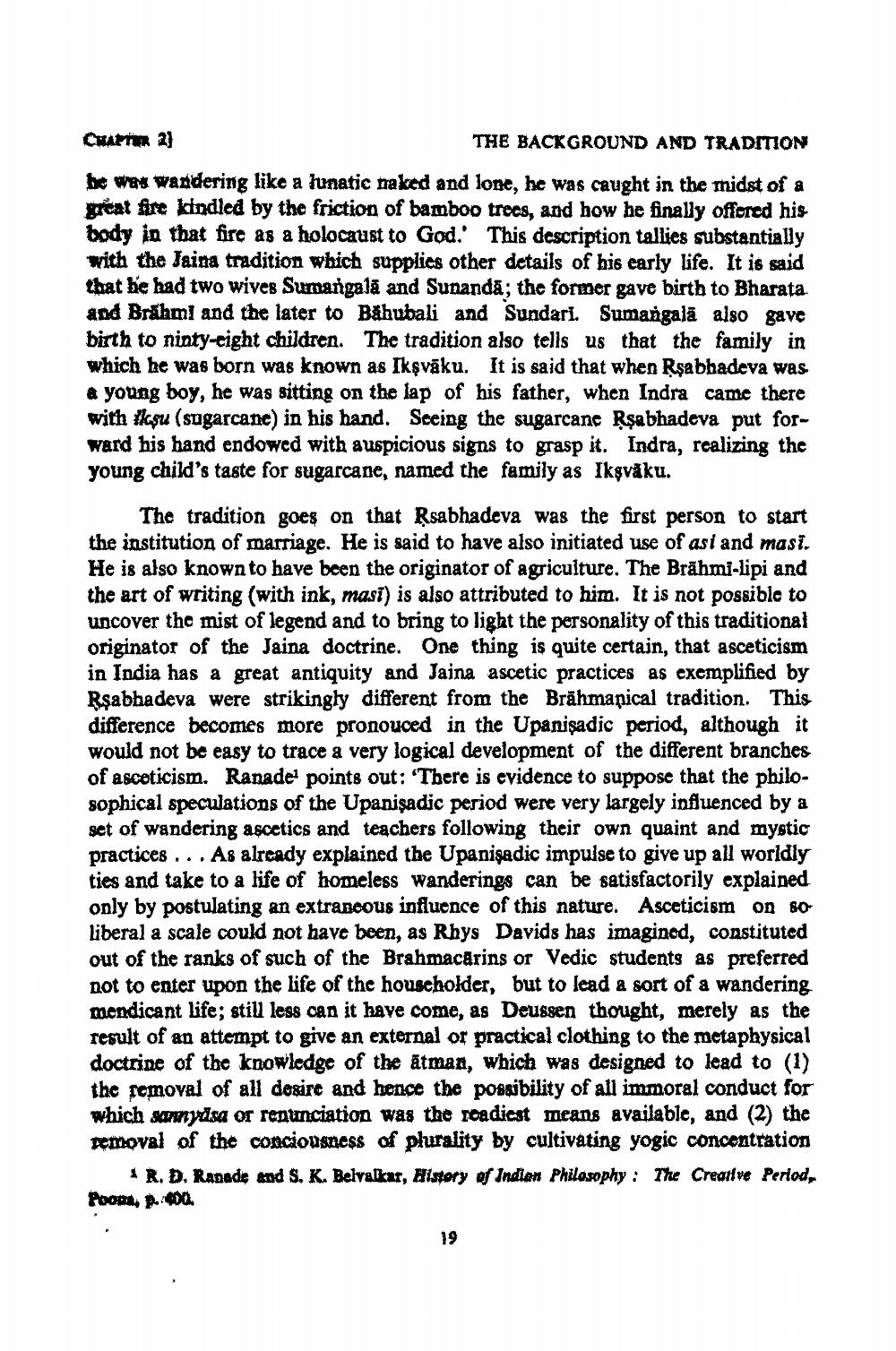________________
CHAPTER 2}
THE BACKGROUND AND TRADITION
he was wandering like a lunatic naked and lone, he was caught in the midst of a great fire kindled by the friction of bamboo trees, and how he finally offered his body in that fire as a holocaust to God.' This description tallies substantially with the Jaina tradition which supplies other details of his early life. It is said that he had two wives Sumangala and Sunanda; the former gave birth to Bharata and Brahml and the later to Bahubali and Sundari. Sumangalā also gave birth to ninty-eight children. The tradition also tells us that the family in which he was born was known as Ikṣvāku. It is said that when Rşabhadeva was a young boy, he was sitting on the lap of his father, when Indra came there with iksu (sugarcane) in his hand. Seeing the sugarcane Rşabhadeva put forward his hand endowed with auspicious signs to grasp it. Indra, realizing the young child's taste for sugarcane, named the family as Ikşvāku.
The tradition goes on that Rsabhadeva was the first person to start the institution of marriage. He is said to have also initiated use of asi and masi. He is also known to have been the originator of agriculture. The Brahmi-lipi and the art of writing (with ink, masi) is also attributed to him. It is not possible to uncover the mist of legend and to bring to light the personality of this traditional originator of the Jaina doctrine. One thing is quite certain, that asceticism in India has a great antiquity and Jaina ascetic practices as exemplified by Rşabhadeva were strikingly different from the Brahmanical tradition. This difference becomes more pronouced in the Upanisadic period, although it would not be easy to trace a very logical development of the different branches of asceticism. Ranade points out: "There is evidence to suppose that the philosophical speculations of the Upanisadic period were very largely influenced by a set of wandering ascetics and teachers following their own quaint and mystic practices... As already explained the Upanisadic impulse to give up all worldly ties and take to a life of homeless wanderings can be satisfactorily explained only by postulating an extraneous influence of this nature. Asceticism on so liberal a scale could not have been, as Rhys Davids has imagined, constituted out of the ranks of such of the Brahmacarins or Vedic students as preferred not to enter upon the life of the householder, but to lead a sort of a wandering mendicant life; still less can it have come, as Deussen thought, merely as the result of an attempt to give an external or practical clothing to the metaphysical doctrine of the knowledge of the atman, which was designed to lead to (1) the removal of all desire and hence the possibility of all immoral conduct for which sunnydsa or renunciation was the readiest means available, and (2) the removal of the conciousness of plurality by cultivating yogic concentration
AR. D. Ranade and S. K. Belvalkar, History of Indian Philosophy: The Creative Period, Poona, p.400.
19




